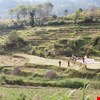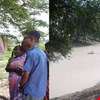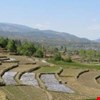
Nepal has vast water resources and approximately 67% of its cultivated land can be irrigated. Out of the 1.7 million ha of Nepal’s irrigable land, 78% has been provided with some irrigation infrastructure. Irrigation is vital to Nepal, especially as the country is facing climate change impacts such as rise in temperature and more erratic rainfall patterns, which is creating prolonged periods of droughts and jeopardising the agricultural production nationwide. As the supply of water for agriculture becomes more variable, water resource competition and water conflicts across the country are equally becoming increasingly visible. The Bajrabarahi Village Municipality is one of those rural communities where water conflicts have been clearly on the rise over the last decade.

In the village of Parakar, untreated wastewater contaminated agricultural lands, jeopardised food safety and posed severe health risks. In 2010, the Parakar community supported by partners from the Country Water Partnerships of Armenia initiated and developed a demonstration pilot project for domestic wastewater treatment. Particular attention was given to community involvement. This case illustrates the value of small scale solutions.

Fragmented data collection made processing, use and interpretation of data challenging. To attain a more uniform data collection, the State Water Cadastre was initiated, designed to collect data on surface and ground waters, water users, water quality and water quantity. Through the implementation of this programme, data was more easily available and also provided for more accurate response to environmental challenges.

Across India, the magnitude and intensity of extreme weather events like drought and floods is increasing. Such changes in climatic conditions affect a myriad of issues of which, access to water for drinking and domestic purposes and for agriculture affect farmer communities in South India the most, as majority of Indian farmers are dependent on rain fed agriculture.

The management of water resources in Bangladesh involves a centralised, heavy engineering approach in order to control floods and install irrigation, however, there is now a pressing need for ensuring social justice and equity in water resource development. Recognising the role of water in poverty alleviation, action has been taken to implement a 25-year National Water Management Plan. Although this is one important step, it is evident that many issues require more work.
Phnom Penh, the capital of the Kingdom of Cambodia, lies on the confluence of the Mekong and the Tonle and Bassac rivers. These rivers are the main source of freshwater for the city’s population of about 1.3 million. Many of the Asian cities’ publicly managed water utilities perform below their potential. Cambodia’s Phnom Penh Water Supply Authority (PPWSA) undertook major reforms and transformed a war-ravaged water utility into a commendable model that stands for other cities to emulate

Desires to maximise irrigated agriculture during the Soviet era has resulted in degradation of water resources. After independence, most countries in the region adopted national policies dealing with water supply and sanitation. Furthermore, since 2002, Global Water Partnership in Caucasus and Central Asia (GWP CACENA) promotes and supports introduction of IWRM. The main lesson learnt is that an IWRM approach should include any essential infrastructure needed for development.

Irrigation infrastructure is crucial for economic development in Fujian. However, due to incomplete water management, the existing water facilities do not satisfy the current development. Action has been taken by the infrastructure department of Fujian provinces to cooperate with local farmers and organisations to explore participatory management and new mechanism of local water management. This case indicates that direct involvement of water users will result in rational use of water resources.

Hebei has only met water demand through overdraft of deep groundwater, resulting in the formation of a groundwater overdraft depression. This issue is further exacerbated by saline water intrusion into the groundwater tables. The water administrative department has taken measures accounting for IWRM principles, for example by establishing the Water Users Association to encourage participatory management. The lesson learnt is the value of a participatory approach in management.

The Hebei province is experiencing severe water shortages resulting in serious environmental and socio-ecological problems. To combat these issues, the provincial government has encouraged rainwater utilisation for agriculture as well as improving soil and water conservancy and vegetation cover. The most important lesson is that rainwater is able to alleviate water shortage particularly in dry season or dry zones.